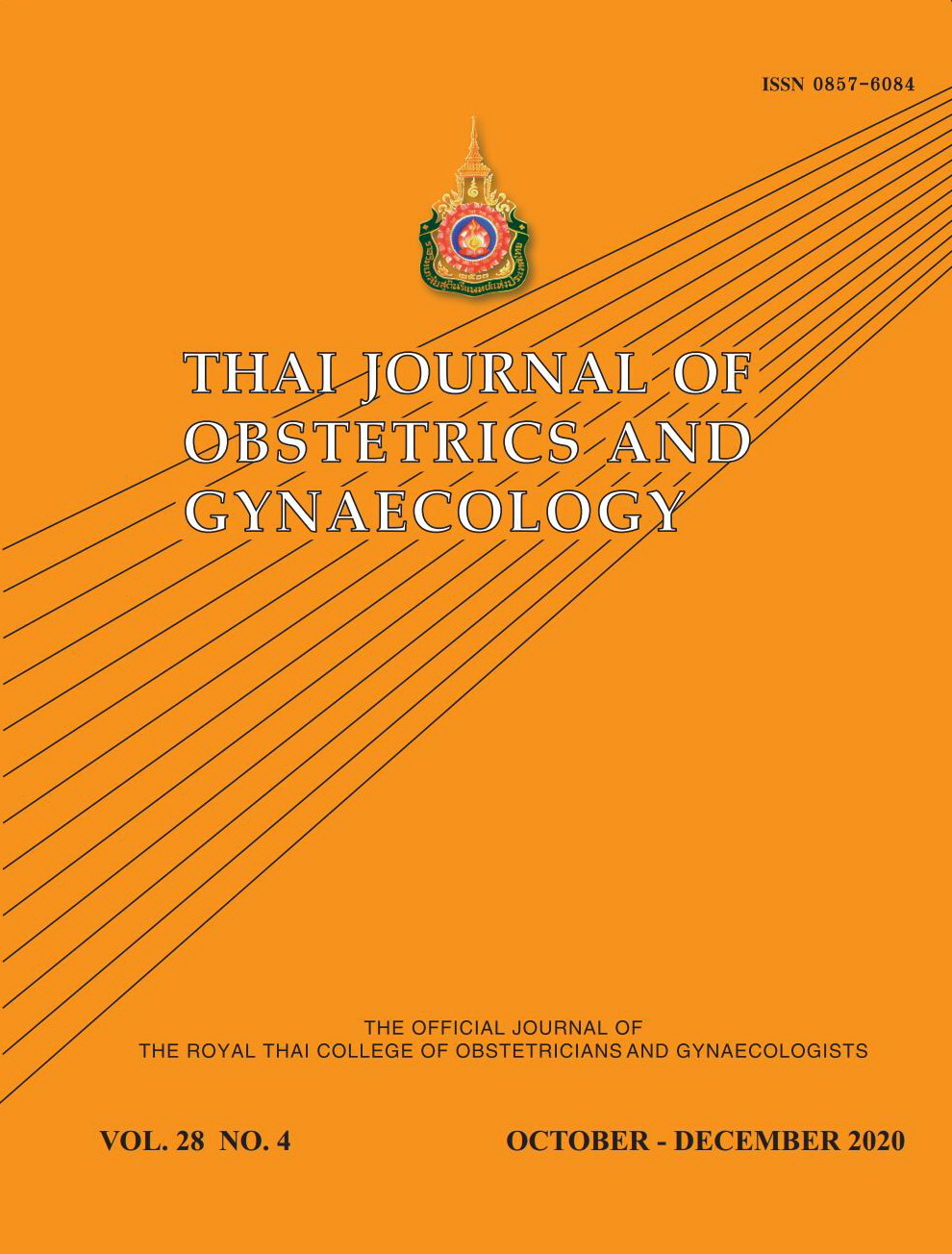Analysis of Adnexal Mass in Women with Previous Hysterectomy - An observational study
Main Article Content
Abstract
Objectives: To characterize the clinicopathological features of adnexal masses arising subsequent to hysterectomy and portion of them requiring re-operation. In addition, average time interval between hysterectomy and diagnosis of adnexal mass was ascertained along with the need of salpingectomy
Materials and Methods: This observational study was conducted on the patients who presented with adnexal mass subsequent to hysterectomy. Data regarding characteristics of lesion, clinical presentation, proportion requiring re-operation and histological nature were analyzed.
Results: Over the span of 4 years, 115 women with hysterectomy presented with adnexal mass. 93% of them had index hysterectomy abdominally. Out of this 115 patients, 45 (39%) were kept on follow-up in whom mass had resolved subsequently (expectant group) and 70 (61%) required operation for the cure (re-operation group). Median time interval to diagnosis of adnexal mass was longer in re-operation group (p < 0.001). Patients in re-operation group were more symptomatic (p = 0.011), presented with larger size (p < 0.001) and more complex cyst (p = 0.0001) with higher number of septa (p = 0.007) compared to expectant group. In 74% of patients, mass arose from the ovary and accounted for 72.3% of the benign mass and 100% of malignant mass. In remaining 26%, tube was confirmed as the source of origin. Commonest histological variety was serous cystadenoma.
Conclusion: Significant number of adnexal lesion disappeared during follow up. Benign ovarian mass was the predominant lesion in re-operated group. Fallopian tube also contributed prominently in 26%, thus salpingectomy with hysterectomy shall decrease the occurrence of fallopian tube pathology.
Article Details
References
Shekhar C, Paswan B, Singh A. Prevelance, sociodemographic determinants and self reported reasons for hysterectomy in India. Reprod Health 2019;16:118:1-16.
Karp NE, Fenner DE, Burgunder- Zdravkovski L, Morgan DM. Removal of normal ovaries in women under age 51 at the time of hysterectomy. Am J Obstet Gynecol 2015;213:716.e1-6.
Davey AK, Maher PJ. Surgical adhesion: a timely update, a great challenge for the future. J Minim Invasive Gynecol 2007;14:15-22.
Yoon SH, Kim SN, Shim SH, Kang SB, Lee SJ. Bilateral salpingectomy can reduce the risk of ovarian cancer in the general population: a meta-analysis. Eur J Cancer 2016;55:38–46.
Holub Z, Jandourek M, Jabor A, Kliment L, Wagnerova M. Does hysterectomy wiyhout salpingo-oopherectomy influence the re-operation rate for adnexal pathology? A retrospective study. Clin Exp Obstet Gynecol 2000; 27:109-12
Lalooei A, Hashemi S R, Khosravi M H. Histopathological distribution of ovarian masses occurring after hysterectomy: a five-year assay in Iranian patients, Thrita 2016;5:e33131.
Loft A, Lidegaard O, Tabor A. Incidence of ovarian cancer after hysterectomy: a nationwide controlled follow up. BJOG 1997;104:1296-301.
Suh-Burgmann E, Hung YY, Kinney W. Outcomes from ultrasound follow-up of small complex adnexal masses in women over 50. Am J Obstet Gynecol 2014; 211:623.e1-7.
Casiano ER, Trabuco EC, Bharucha AE, Weaver AL, Schleck CD, Melton LJ 3rd, et al. Risk of oopherectomy after hysterectomy. Obstet Gynecol 2013;121:1069-74.
Shiber LD, Gregory EJ, Gaskins JT, Biscette SM. Adnexal masses requiring reoperation in women with previous hysterectomy with or without adnexectomy. Eur J Obstet Gynecol Reprod Biol 2016;200:123-7.
Diamond MP, Wexner SD, diZereg GS, Korell M, Zmora O, Goor HV, et al. Adhesion prevention and reduction: current status and future recommendations of a multinational interdisciplinary consensus conference. Surg Innov 2010;17:183-8.
Morse AN, Schroeder CB, Magrina JF, Webb MJ, Wollan PC, Yawn BP. The risk of hydrosalpinx formation and adnexectomy following tubal ligation and subsequent hysterectomy: a historical cohort study. Am J Obstet Gynecol 2006;194:1273-6.
Falconer H, Yin L, Grönberg H, Altman D. Ovarian cancer risk after salpingectomy: a nationwide population-based study. J Natl Cancer Inst 2015;27:107:dju410.
Chao X, Wang X, Xiao Y, Ji M, Wang S, Shi H, et al. Effects of hysterectomy with simultaneous bilateral salpingectomy on the subsequent pelvic mass. J Ovarian Res 2019;12:27:1-8.
Ayşegül Öksüzoğlu, Şebnem Özyer, Özlem Yörük, Rıfat Taner Aksoy, Ömer Hamit Yumuşak, and Özlem Evliyaoğlu. Adnexal lesions after hysterectomy: A retrospective observational study. J Turk Ger Gynecol Assoc 2019;20: 65-9


